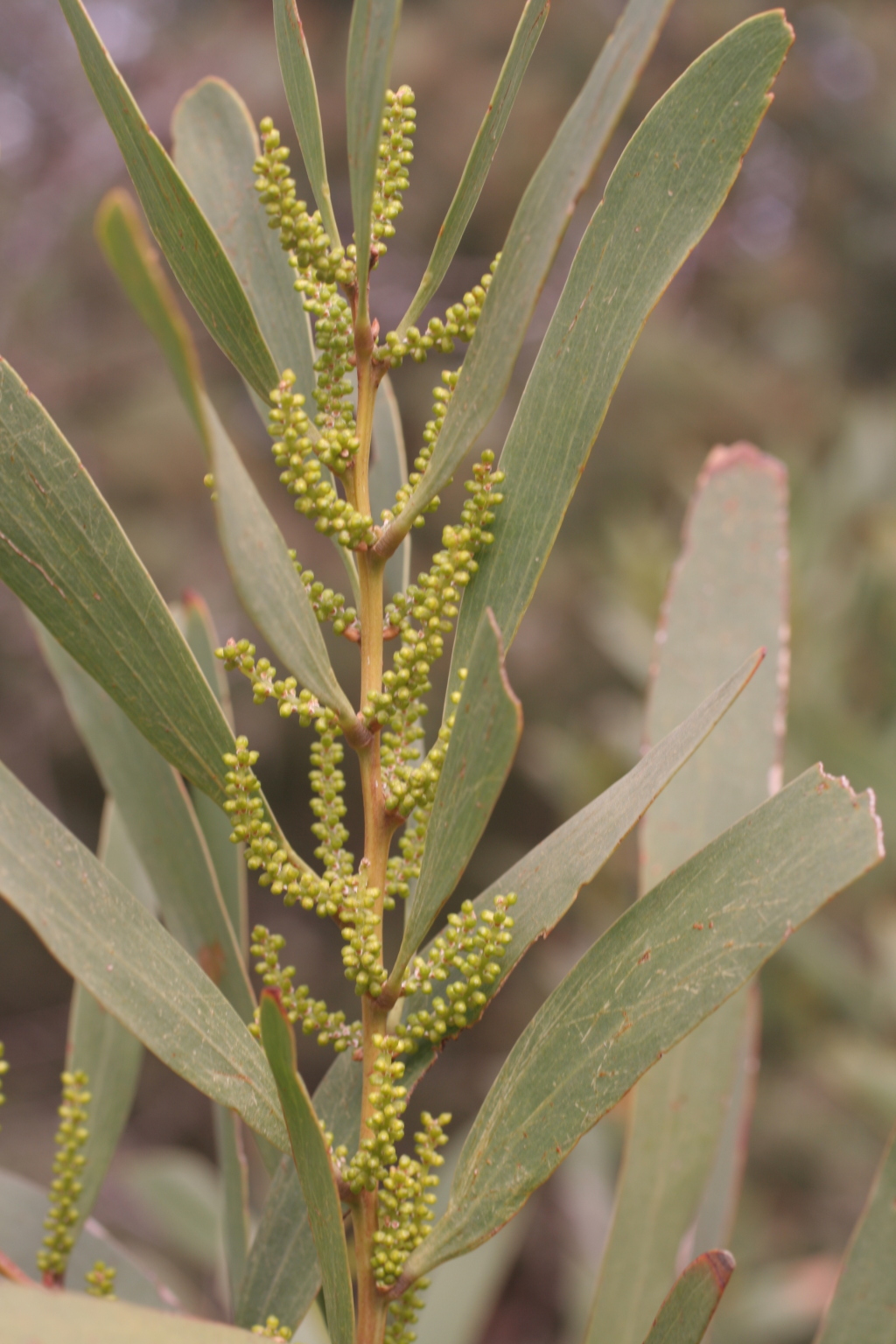Acacia longifolia subsp. longifolia
Commonly an erect shrub or small tree to 10 m high. Phyllodes 5–20 cm long, 5–15 mm wide, thin, pliable, erect or spreading, mostly dark green. Pods mostly coriaceous and straight. Flowers Jun.–Oct.
Wim, GleP, Brid, VVP, VRiv, GipP, OtP, WaP, Gold, CVU, GGr, DunT, EGL, EGU, WPro, HSF, HNF, OtR, Strz, HFE, VAlp. Widespread in southern Victoria, possibly not native west of East Gippsland, but original range difficult to assess due to widespread naturalisation and equally common misidentification at varietal level.
This subsp. grades almost imperceptibly into subsp. sophorae, but the phyllodes typically are thinner, more pliable, usually wider at or below the middle (those of subsp. sophorae are mostly wider at or above the middle), and narrow gradually towards the apex (those of subsp. sophorae usually narrow abruptly). These subsp. are sometimes treated as distinct species, but due to their morphological similarity and the presence of plants with intermediate features, infra-specific rank seems appropriate.
It seems likely that subsp. longifolia is spreading rapidly in southern Australia and becoming more common, possibly as a result of garden-escapes.
See A. oxycedrus for notes about hybrids with that species.
Entwisle, T.J.; Maslin, B.R.; Cowan, R.S.; Court, A.B. (1996). Mimosaceae. In: Walsh, N.G.; Entwisle, T.J., Flora of Victoria Vol. 3, Dicotyledons Winteraceae to Myrtaceae, pp. 585–658. Inkata Press, Melbourne.
 Spinning
Spinning



